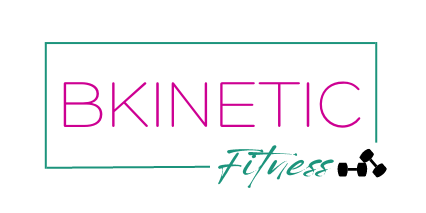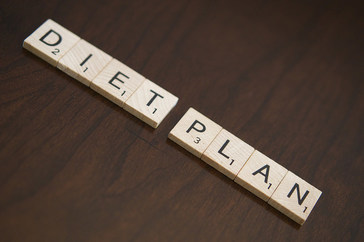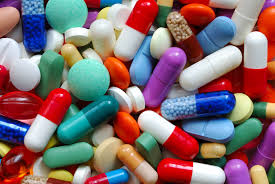With the thousands of diet books on Amazon and on the shelves of our local Barnes & Noble, not to mention the celebrities espousing the wonders of their own fad diets in every magazine in the grocery checkout line, it’s any wonder why we’re all so confused on what really works.
I’ve experimented with a few types of diets in the past, mainly Paleo, 21-Day Sugar Detox, low fat, carb cycling, IIFYM (If It Fits Your Macros)/flexible dieting, and even following a low-calorie meal plan from the pages of Oxygen magazine. I’ve found them all more or less effective for me, but some more restrictive (and thus less sustainable) than others.
There’s no shortage of ways in which we can manipulate our diet, which can be both a good and a bad thing. On one hand, we don’t have to be stuck with a cookie-cutter diet that is ineffective and restrictive. But on the other, there are sooooo many ways we can overcomplicate things and make losing weight harder than it has to be.
And there are a few fat loss tactics that pop up over and over and are actually a load of BS and can be counterproductive to many women’s results.
Fat Loss Myth #1: 1200 calories is the optimal intake for women to lose weight.
The 1200-calorie number seems to be thrown out a lot as the magical number for weight loss. I’m not sure where it came from originally, but it has stuck around for years. My biggest problem with it
is that it is such a low number of calories and for the vast majority of women looking to lose weight, it’s a very drastic caloric deficit and doesn’t take into account the individual’s body type, height, weight, current body fat percentage, activity level, etc. Talk about a recipe for disaster!
It’s one thing for someone like me to consume only 1200 calories — I’m only 5’0″ tall and 115-ish lbs. My BMR is estimated around 1200-1250 calories. But for someone who weighs more and is taller (does more than sit on the couch all day), that number is waaaaay too low. Even if we bump that number up to 1500 calories, which is another common threshhold, it’s still a pretty steep deficit to start out with.
Sure, you might lose weight fast and furious at first, but what happens when your energy levels plummet, and with it, your willpower and performance in the gym??? What happens when your cravings get out of control and you can’t sleep because your stomach is gnawing and growling? This can lead to binges, skipped workouts, and decreased movement throughout the day. Remember what I said about the body and homeostasis? It’s coming into play here again. Whatever we do, the body will respond in some way, so we have to be conservative and strategic in order to get the desired response, especially in the long-term.
If you want to go the calorie-counting route, I suggest going to iifym.com and using their macro calculator to figure out your total calories and macronutrient breakdown. Like anything else, you need to start somewhere reasonable and then see what happens, tweaking along the way. Your metabolism and body activity will adapt, so eating one stagnant amount of calories, especially if they are low for your body type and activity level, will bring about that plateau even faster with nowhere to go.
A good rule of thumb is starting with a 15-20% caloric deficit. So, say your body maintains its weight at 2000 calories. Subtracting 15% would equal 300 calories, and your calorie goal would be 1700. Much more reasonable and easier to stick with, not to mention still gives you some wiggle room down the line when results stall. And we have a better chance of keeping your hormones happy and balanced and your hunger in check.
Fat Loss Myth #2: The US RDA for protein is adequate for weight loss and muscle-building.
Nope, nope, nope.
Protein contains amino acids that are the building blocks of muscle. Without adequate protein, you’ll struggle to build lean muscle, maintain the muscle that you already have, and get that definition and “toned” look that you’re after.
Let’s take a look at the US RDA guidelines for protein intake. It lists the recommended amount as 0.8 grams of protein per kilogram (1 kg. = 2.2 lbs.) of body mass. So for someone who’s 150 pounds, they would need only 55 grams per day. That is really not much at all. You have to keep in mind that these recommendations are set as the minimum amount of intake to prevent a deficiency in sedentary, relatively healthy individuals. It doesn’t take into account an active lifestyle, nor optimal performance or aesthetics. The research supports the assertion that active adults need more protein than sedentary adults.
Furthermore, studies have found that people on diets high in protein (25-35% of daily calories) tend to burn more fat and lose less muscle than people on diets with intakes of 15% protein or less. A more optimal intake of protein seems to be around 1.4-2.0 grams per kilogram of body mass (or 95-135 grams for a 150-pound individual). Another well-known guideline is 1 gram per pound of body weight or lean muscle mass (if the individual is very overweight or obese). A high intake is especially crucial when training with a high intensity or cutting calories and/or carbs.
Not only is a high protein intake beneficial, it is completely safe and not detrimental to kidney or bone health. This misconception comes from studies that looked at a high protein intake in animals and in patients with pre-existing renal disease, not healthy, active individuals.
One study went a step further and looked at an intake of 4.4g/kg (for a 150# individual this would be 300g/day!), and found that even that level of intake is safe and does not lead to a gain in body fat (provided that total daily calories are in check of course). There was no additional benefit to eating more than the recommended 2.0g/kg benchmark, but there is absolutely no harm in doing so.
A higher protein intake has a host of benefits, including:
• Improved immune function
• Enhanced metabolism
• Increased satiety
• Weight management
• Improved performance
Here are a few interesting articles if you’d like to read up on protein further:
Biolayne.com — “Protein Experts Respond to Recent Anti-Protein Claims”
Journal of the International Society of Sports Nutrition — Position Stance
Fat Loss Myth #3: A low carb diet is the best diet for fat loss for everyone.
This is one of the most common things that I get asked about when it comes to diet. The popularity of the Atkins diet, Paleo, ketogenic diet, and others have seemed to put the fear of carbs in us. We’ve become afraid of the insulin response that eating carbs causes. We think that it’s going to cause us to store fat. To a point, it’s good that we’re now looking at our overall carb intake and evaluating if we really need all those carbs. For me and many of my clients, it’s way too easy to overeat carbs, so limiting the intake of this macronutrient helps keep overall daily calories in check.
Carbs play a very important role — they give us quick energy, as glucose is the fuel that our brains and bodies need. They help build muscle. Cutting carbs really low can cause a variety of unpleasant side effects: fatigue, irritability, insomnia, impaired metabolic rate, increased cortisol, suppressed immune function, and impaired thyroid function. Women seem to be more sensitive to the effects of a lack of carbs, particularly with hormone regulation.
In other words, the low carb approach isn’t perfect.
Let me emphasize here that my overarching point is that there is no one particular diet that is perfect for everyone. A lot of people do very well on a low carb diet. There is absolutely nothing wrong with it.
But most people do the best with a more moderate approach, and most importantly, intake needs to align with your body type, activity level, current health status, and goals. If you’re an endurance athlete, you will probably find that you need a higher carb intake than if you were sedentary or just did a lot of walking for your exercise.
And everyone has a unique level of carb sensitivity, or as Metabolic Effect calls it, carb tipping point. This takes some experimentation and time to discover.
And as I’ve said before, the best diet for you is the one you’ll actually follow consistently over the long haul! If you looooooove bread (as I do) and having a piece several days a week keeps you from feeling deprived, then going super low carb may not be your best bet. If you love steak, chicken, and peanut butter (not necessarily all at the same time! haha!), then a lower carb diet may do the trick. Do what works for you, not your best friend or husband or coworker.
For the average person, a good goal is to eat as many carbs as possible while still seeing results. This will help keep your performance in the gym at a good level, help prevent undue hormonal imbalances due to prolonged dieting, and give you something to play with if you hit a plateau. If you start a diet at 25-50 grams of carbs a day or less, then you don’t have a whole lot of wiggle room down the road. You can only drop your carbs down so low before it becomes counterproductive.
Again, this is not a rant against low carb diets. It’s just important they we don’t just assume that one diet is the holy grail of fat loss without taking into account all those other factors I mentioned above.
And carbs are not evil!
More Reading:
Precision Nutrition — “All About Carbohydrates“
Fat Loss Myth #4: Fat burners and other fat loss supplements will boost fat loss and are perfectly safe.
Raspberry Ketones, Green Coffee Bean Extract, CLA, Green Tea Extract, Hydroxycut, Herbalife, Garcinia Cambogia, and hCG are just a few of the more popular supplements that are marketed for fat loss.
Americans spend an estimated $32 billion a year on supplements, which is an unregulated industry with very little quality research and evidence supporting the claims on the bottles. So you may be getting more (or far less) than you bargained for.
Some estimates say that up to 79% of supplements on the market today don’t have the dosage or even contain the main active ingredient listed on the label! And many contain a “proprietary blend,” which is label-speak for “we’re not going to tell you exactly how much, if any, of each ingredient is in this bottle.”
The FDA estimates that 70% of supplement companies don’t follow basic quality control standards, and only 0.3% of the 55,000 supplements available on store shelves have actually been studied close enough to determine any possible side effects.
At best it may be an ineffective “fairy dusting” of the active ingredient, and at worst may have sawdust, rat poop, steroids, or other unlisted ingredients that could cause a very bad reaction or even death.
Even if the supplement itself is as on the up and up as it can be, safety is still not assured. Every formulation of Hydroxycut has been linked with acute liver injury — everything from elevated liver enzymes to liver failure and death. Especially potent forms of green tea extract can be toxic to the liver as well. The hCG diet is only “effective” (I use that term very loosely here) due to the highly restrictive 500-calorie diet that it’s paired with (which has its own set of dangers). There is no conclusive evidence of its effectiveness on its own.
In a nutshell: Just because it’s sitting on the shelf at your local Walgreen’s or GNC doesn’t mean that it’s safe or effective.
A 1994 federal law (the Dietary Supplement Health and Education Act) prevents the FDA from approving or evaluating supplements before they are sold. They can only act when consumers report harmful side effects. I don’t know about you, but that is some scary shit!
So unfortunately, it’s up to the consumer to research the claims and the ingredients used to make sure that it’s safe and effective for them to take, not to mention the actual company producing the supplement. Luckily, the smart and well-credentialed folks over at Examine.com comb through every published supplement study possible and compile thorough discussions on just about every supplement available — efficacy, safety, contraindications, and more — to enable the average person to make an educated choice when it comes to what they put in their bodies.
Now, let’s talk efficacy. The vast majority of fat burners do not work. Period. There is at best mixed evidence in human studies, with a tiny percentage only providing the tiniest of benefit, maaaybe burning a few extra calories a day, not the significant amount one would expect. It might be the difference between burning 5 calories vs 15. Burning those few calories with a few minutes of leisure walking or biking is cheaper, healthier, and safer than that fat burner.
CLA (conjugated linoleic acid) is another so-called fat burner that I keep seeing more and more on social media, usually promoted by fitness competitors and models (who are being paid to promote it). Studies have shown some positive results in rats but inconsistent findings in humans. Unfortunately, what works in rats doesn’t always translate into humans. And just because there is some evidence of efficacy in a study doesn’t mean that it’s particularly significant in the real world application or that the supplement in question has the appropriate dosage required for that effect.
It’s a risk vs reward thing. Pay hundreds or thousands of dollars over several months, deal with unpleasant side effects, and lose maybe 2 extra pounds (if you’re lucky)? Doesn’t sound like a good return on investment to me.
It should go without saying to thoroughly research any supplement you are considering, as well as any possible interactions with other supplements, over-the-counter meds (like Tylenol or cold medicine), and prescription meds you may already be on. Talk to your doctor and pharmacist to get clarification.
If you’ve read this far, thank you. You deserve a medal. ;-P If this comes across as a long-winded rant — #sorrynotsorry. I’m just that passionate about not only helping women build a strong body and mind, but also about steering them clear of the widespread BS and keeping them sa
fe.
Keeping you safe.





